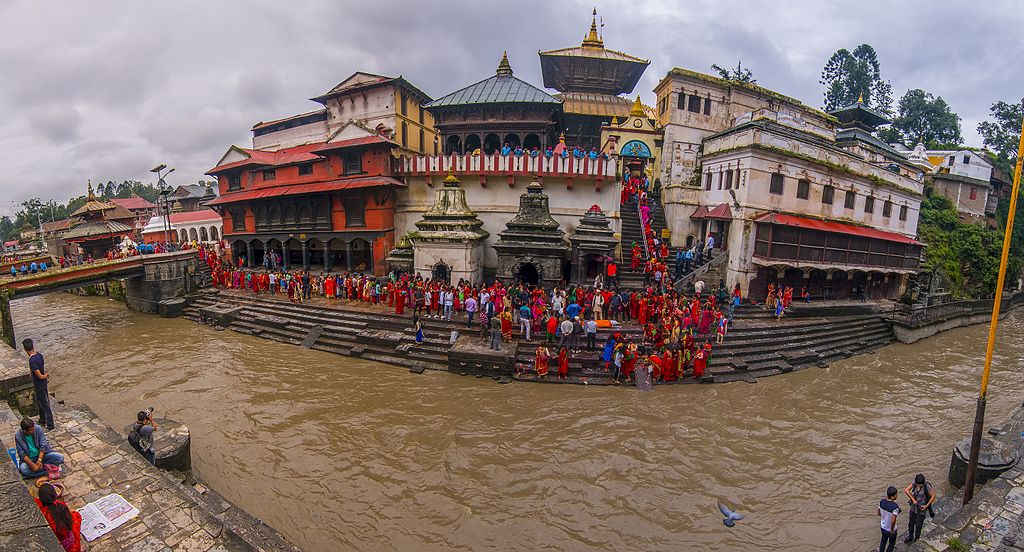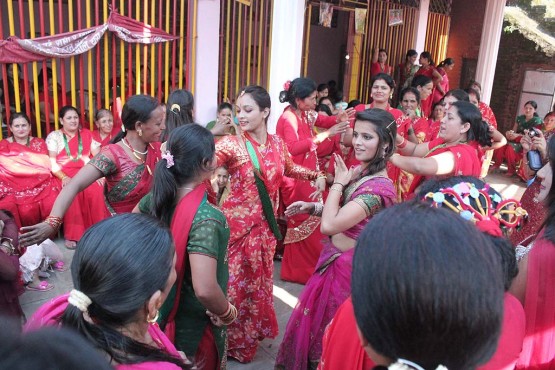- HOME
- Destination
- Adventure Activities
- About Us
- BLOGS
- CONTACT US

Being rich in culture and tradition, Nepal celebrates many festivals throughout the year. With four main religion and thirty-six different ethnic groups, there are a number of the festivals, which are celebrated distinctively. Festivals in Nepal hold special essence from traditional as well as social point of view. Festivals are the way of remembering our culture and tradition and keeping them alive. Also, festivals bring us closer to our friends, family and loved ones.
The festivals of Nepal are vibrant, joyous and meaningful. There are several different festivals which cherish the relationship with that of human to gods, persons, and animals as well. Festivals are not just for celebration; they also teach us the way of life and the importance to value the things we have. There are many such festivals which teach us a way of life as Holi is celebrated as a festival of forgiveness, Tihar is dedicated to brothers, gods, and animals like dogs, crows, cow, and an ox for their ultimate relation and significance to humans.
Out of many such festivals, Teej is one of such festivals which signifies the relationship between husband and wife and the family as well. Teej is festival of Nepali Hindu women who keep a rigid fast for their family and celebrates with friends and family.

Teej in Nepal
Teej is a festival celebrated by women in Nepal and some parts of India. Teej means “third” day that falls every month after the new moon and the third day the full moon night of every month. This festival is dedicated to Goddess Parvati for her union with Lord Shiva. It is a monsoon festival that celebrates the bounty of nature, arrival of clouds and rain, greenery and birds with social activity, rituals and customs. During Teej, women keep a rigid fast without even drinking a drop of water. Women come together, sing and dance in traditional Teej songs and enjoy their freedom.
There are different types of Teej which are celebrated uniquely from the other. They are Haritalika Teej, Hariyali Teej, and Kajari Teej.
Haritalika Teej is dedicated to the Goddess Parvati. “Haritalika” word is a combination of two words, i.e. “harit” and “aalika,” which means “abduction” and “female friend” respectively. As per the legend, Goddess Parvati incarnated as a daughter of Himalaya king Himavat. King Himavat promised to marry his daughter to Lord Vishnu at the suggestion of Narad. Goddess Parvati was against this decision of her father, and when she told her friend about her decision, she took Goddess Parvati to a very dense forest so that king Himavat couldn’t find her and marry her against her wish to Lord Vishnu. Then Goddess Parvati made a Shiva lingam from her hair and prayed to Lord Shiva. Lord Shiva got impressed by her devotion towards him and finally got married to her along with her father’s blessing.
And, from that day, Haritailka Teej is celebrated as Goddess Parvati’s female friend (aalika) had to abduct (harit) her so she could marry the one she wished for. Haritalika Teej is the same that is practiced by Nepali women.
Hariyali Teej is celebrated during monsoon or rainy season when the surrounding is green. Hariyali Teej means “Green Teej.” It is celebrated as a remembrance of a reunion of Lord Shiva and Goddess Parvati, the very day when Lord Shiva accepted Parvati as his wife. Women observing Hariyali Teej keep a fast, and the moon is the focus of this fast. It is practiced in India in states like Punjab and Rajasthan.
Kajari Teej is also called Boorhi Teej/Kajali Teej. Women pray to Lord Shiva, sing, and dance in folk songs which are known as kajris. The lyrics of the songs tell about the pain of women of her separation from parents’ home, where she has been sent to celebrate Teej or about the hope that she has been keeping to be collected by brothers to celebrate Teej. Women celebrate this Teej without any food or water. They pray the moon and break the fast by eating sattu (flour with a mixture of cereals and ground pulses).
Some part of Kajari Teej is similar to that of the Teej which is celebrated in Nepal. There is the custom of calling or collecting their married daughter or sisters by Nepali parents or brothers in Dar Khane Din (Feast Day) to celebrate her day.
In Nepal, Teej is a three-day celebration which combines grand feast and very rigid fasting as well. This festival is dedicated to the Goddess Parvati, marking her day of union with Lord Shiva. It is celebrated for the wellbeing of husband, children, and purification of body and soul. Teej is celebrated by women, where she fasts without food and water for long-life of husband and happy relationship between them.
This day is called as Dar Khane Din which means feast day. It is the day before Teej. It is probably the only day in the whole year where women are allowed full freedom of expression. For a whole year, they devote themselves to their family, and on this particular, they have a freedom to have a day to just by her.
The women come together in one place dressed up in a best look and clothing using full makeup, and they sing and dance in Teej songs. They also have a grand feast with several varieties of food and sweets. Women also get invited by their parents or brothers, where they have a feast in the eve of the Teej. The feast goes till the midnight, after which the fast for 24-hour starts.
This is the day of fasting. After having a grand feast, women fast for next 24-hours. Married women keep the fasting without having food and drink for long-life, peace and prosperity of their husband and family as a blessing of her devotion from God, while unmarried women fast to get blessed with a good husband. Women fast in their own way, some eat fruits and liquid, while some don’t even have a drop of water.
On this day of fasting, women wear their best attire of red color and visit the nearby temple of Lord Shiva where they offer their prayer and sing and dance. Of all the temples the Pashupatinath Temple gets the highest number of devotees. From several rituals of the puja, the oil lamp is very important which must be alight throughout the night to bring peace and prosperity to the husband and family.
The final day of Teej is Rishi Panchami where women offer their praying to the Saptarishis (seven sages) after completing the previous day’s puja. They take a ritual bath in holy rivers, ponds or any other water masses with red mud which is found on the roots of the sacred datiwan bush along its leaves. This act final ritual of purification is believed to discharge women from all their sins.

Women taking bath in Pashupatinath during Rishi Panchami
This year Teej is celebrated in Nepal in Bhadra 26 (September 12) as a feast day, Bhadra 27 (September 13) as main day/fasting day and Bhadra 28 (September 13) as Rishi Panchami. So, if you are in Nepal, then do not forget to witness this vibrant and joyous festival of Nepal by visiting nearby temples.
Your email address will not be published.Required fields are marked *
You must be logged in to post a comment.
0 Comments on "Teej: The Festival of Nepali Hindu Women"